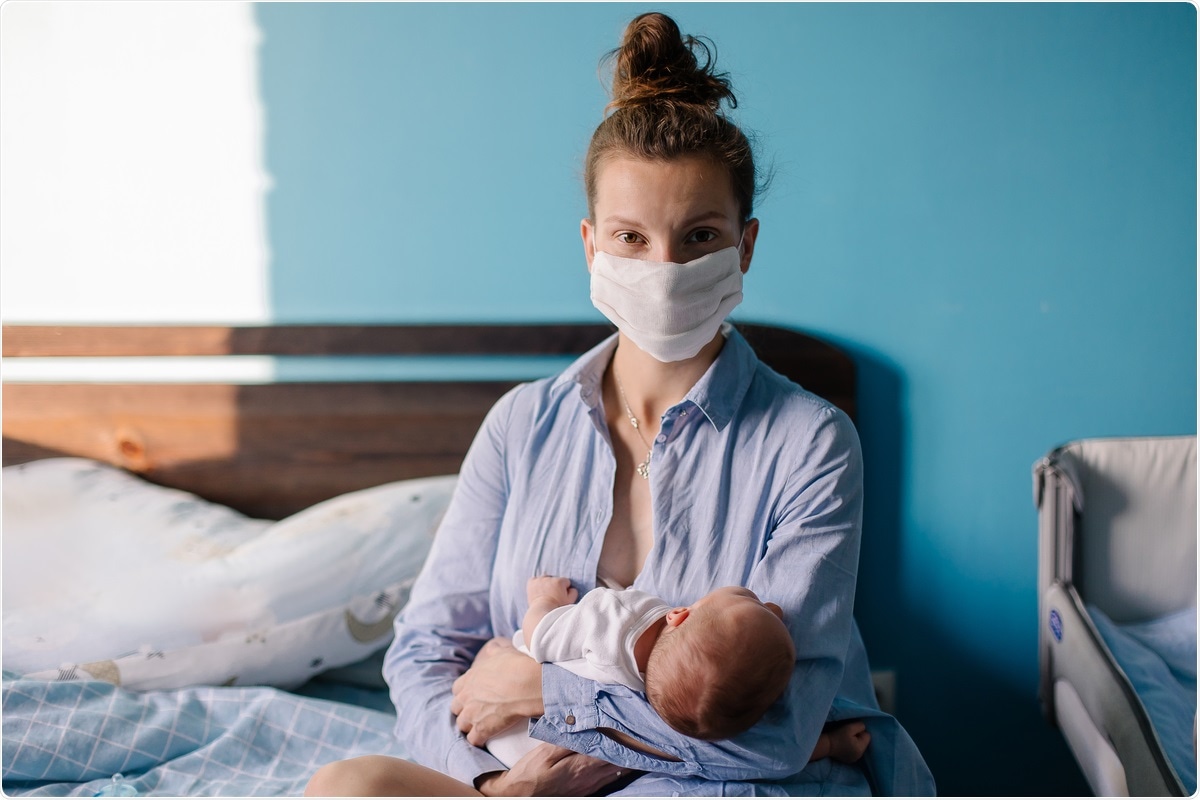The rapid spread of severe acute respiratory syndrome coronavirus 2 (SARS-CoV-2) has led to rampant hospitalizations. The most at-risk populations for developing severe disease include – the elderly; infants and neonates; and individuals with pre-existing heart, respiratory, metabolic, and autoimmune conditions.
 Study: Selective functional antibody transfer into the breastmilk after SARS-CoV-2 infection. Image Credit: Da Antipina/ Shutterstock
Study: Selective functional antibody transfer into the breastmilk after SARS-CoV-2 infection. Image Credit: Da Antipina/ Shutterstock
It is known that infants receive passive immunity through the transfer of systemic antibodies through the placenta and mucosal antibodies via breastmilk. Systemic antibodies confer protection for three to nine months until the infant is equipped with an active immune response. Breastmilk antibodies are primarily derived from B cells primed in the mucosa. These render high concentrations of secretory antibodies and a prolonged period of immune transfer providing immunity against mucosal pathogens.
The Study
A recent study published in Cell Reports aimed to understand better the mechanism of antibody transfer to breastmilk in the setting of SARS-CoV-2 infection.
The present study used systems serology to profile antibody Fc characteristics of SARS-CoV-2-specific responses in a cohort of 45 matched maternal serum-breastmilk dyads. Marked anti-SARS-CoV-2 response was detected in the serum and breastmilk of SARS-CoV-2-infected mothers compared to uninfected mothers, marked by a dominant IgA and IgM response in breast milk and IgG response in serum.
Meanwhile, a polyfunctional anti-spike response was detected in serum, and a more limited antibody functionality was transferred to the breastmilk. The results confirmed a preferential transfer of spike-specific secretory IgA and IgM to the breastmilk and the presence of functionally selected IgG antibodies in the breastmilk of SARS-CoV-2 infected mothers. It was stated the mothers appear to transfer protective but non-inflammatory antibodies into the newborn.
When the Fc transfer profile of SARS-CoV-2-specific antibodies to breastmilk was assessed, it was noted that SARS-CoV-2-specific antibody titers were observed across both compartments in COVID+ samples compared to COVID− samples. However, the levels of all isotypes were persistently lower in breastmilk than in serum.
A transfer ratio was calculated for each isotype and Fc-receptor binding feature to determine if particular antibody subpopulations were transferred preferentially into breastmilk. It was found that the placenta preferentially transfers Fc-receptor (FcR) binding antibodies. Still, limited immunoglobulin (Ig)G and IgG-binding Fcγ-receptor (FcγR) transfer and robust IgM, IgA, and IgA-binding FcR (FcαR) transfer were observed. The results depicted preferential transfer of IgA and IgM in breastmilk with more limited IgG1 transfer, following SARS-CoV-2 infection during pregnancy.
When SARS-CoV-2-specific antibody effector functions in the serum and breastmilk were compared, a significantly greater functionality of antibodies was apparent—which was capable of inducing more heightened levels of antibody-dependent cellular monocyte phagocytosis (ADCP), neutrophil phagocytosis (ADNP), natural killer (NK) cell activation (ADNKA), complement deposition (ADCD), and neutralization (NT50) in the serum.
Functional antibodies were lower in breastmilk, while neutralizing antibodies and neutrophil phagocytosing antibodies (ADNP) had higher transfer ratios into breastmilk than in serum. Unlike in the placenta, breastmilk had limited NK-cell activating functions. This finding suggests strict functional antibody selection into the breastmilk, likely to limit inflammatory antibodies to the neonatal gut. Hence, there exists a functional selection of antibodies into the breastmilk.
When the relationship between serum and breastmilk antibody profiles of SARS-CoV-2-infected mothers were compared, it was noted that the coordinated antibody signature in maternal serum is not conserved in the breastmilk.
Moreover, the lack of significant correlation between maternal IgA titers and breastmilk IgA titers and functions projected that breastmilk IgA might not be derived from maternal serum IgA but from mucosal plasma cells that may populate breastmilk. The functional response in breastmilk was negatively correlated with serum antibody titers. Thus, certain functional antibodies from the serum are linked to increased FcR binding in the breastmilk, underscoring a potential mechanism of selective functional antibody transfer to the breastmilk.
It was also found that women with more severe COVID-19 transferred enhanced levels of both FcR binding IgG and IgA antibodies against several SARS-CoV-2 specificities in breastmilk. Contrastingly, mothers with less severe disease transferred higher levels of functional antibodies, such as – NK cell-activating and nucleocapsid-specific ADNP- and ADCP-inducing antibodies. Therefore, the functional selection of antibodies is dependent on the disease severity. Mothers with more severe disease transfer higher titers of less functional antibodies into breastmilk.
Additionally, although IgM titers waned significantly over time in the serum, the breastmilk transfer remained high over time. Thus, a highly stable IgM, IgA, and IgG transfer to the breastmilk was apparent irrespective of the time from symptom onset. This finding reflects the continued production of secretory IgM populating the breastmilk during lactation, despite the waning of serum IgM as a response to natural infection. This feature marks the distinct humoral mechanisms at childbirth that play crucial roles in protecting infants from infection.
Conclusion
The results of this study illustrate a preferential transfer of antibody isotypes that can be coupled to a secretory chain, IgM and IgA, into breastmilk following natural infection. Furthermore, emerging evidence suggests that antibody transfer through breastmilk may be altered due to the extraordinarily high levels of IgG antibodies induced by the current Emergency Use Authorization (EUA)-approved mRNA vaccines, providing infants with both robust IgA and IgG immunity that may be able to confer enhanced immunity compared to the natural infection.
Future studies should aim towards understanding the durability of antibody transfer after natural and vaccine-induced protection.